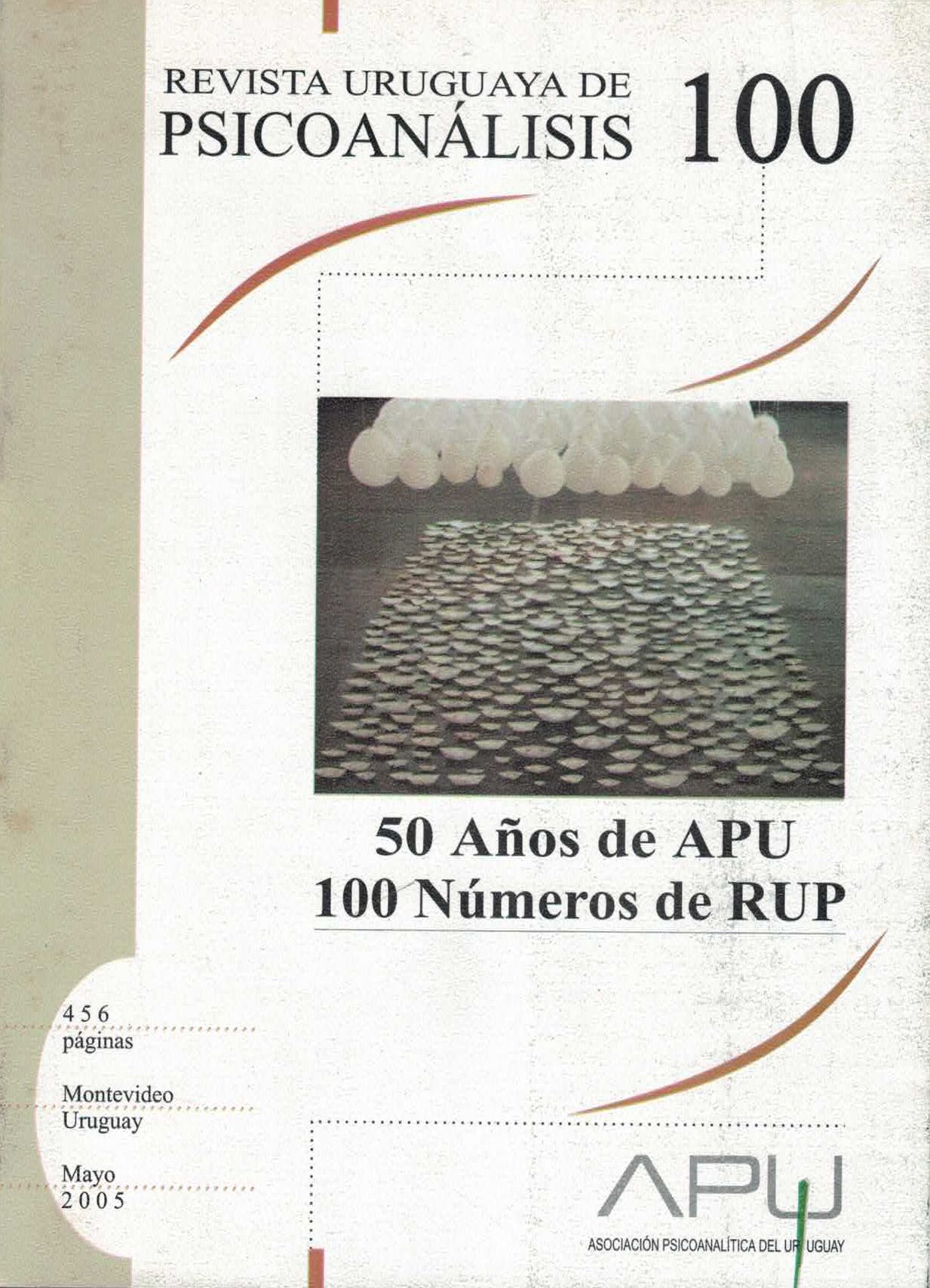Complejidad de la empatía psicoanalítica; una exploración teórico-clínica.
Palabras clave:
empatía, contratransferencia, proyección, escisión, material clínico, trabajo psíquicoResumen
Cómo ha evolucionado el concepto de empatía? ¿A qué prejuicios está expuesto? ¿Qué es la empatía psicoanalítica y en que se diferencia de la empatía natural? A través del análisis de una sesión elegida intencionalmente entre otras normales, exenta por lo tanto de efectos espectaculares en el diálogo analítico, se exploran los aspectos empáticos puestos en juego en el campo por una paciente y aquellos potencialmente utilizables por el analista en base a la experiencia formativa profesional compartida por los colegas. Es por lo tanto reafirmada la imposibilidad técnica, "metodológica", de la empatía que -como la creatividad del preconciente- no puede ser "encendida" a voluntad.
Descargas
Referencias
Beres D., Arlow J. A. (1974): "Fantasy and Identification in Empathy". Psychoanal. Q., 43, 26-50.
Bion W. R. (1970): "Attention and Interpretation": a Scientific Approach to Insight in Psychoanalysis and Groups". Tavistock, London.
(1967): Second Thoughts. Heinemann, London.
Bolognini S. (1984): "Empatia: presentazione al Centro Veneto di Psicoanalisi", 10 Aprile 1984.
(1991): "Gli affetti del'analista: analisi con l'Io e analisi col Sè". Riv. Psicoanal., 37, 339-371.
(1997a): "Empatia e differenza". In Sacerdoti G., Racalbuto A. "Differenza, indifferenza, differimento". Dunod, Milano.
(1997b): "Empatia e patologie gravi". In "Quale psicoanalisi per le psicosi?", a cura di A. Correale e L. Rinaldi, Raffaello Cortina Ed. Milano.
(1997c): "Empathy and Empathism". Int. J. Psychoanal., 78, 279-293.
(1997d): "The "kind-hearted" versus the "good" Analyst: Empathy and Hatred in Countertransference". In Bertolini G., Giannakoulas A.,
Hernandez M., Molino T. "Squiggle and Spaces", Rebus Press, London.
(1998): "Compartir y malentender". Rev. de Psicoanalisis, 55, 7-20.
(2001): "Empathy and the Unconscious". Psychoanal. Q., 70, 447-473.
(2002): "L'empatia psicoanalitica". Bollati Boringhieri Ed., Torino.
(2003): "Parler choses, parler mots". Libres Cahiers pour la Psychanalyse, 7, 15-20.
(2003): "Vrais et faux loups. L'alternance du refoulement et du clivage dans les tableaux cliniques complexes". RFP, 67, 1285-1304.
(2004): "Misunderstandings on Empathy". Bulletin of the British Psychoanalytical Society, February 2004.
Bonino S., Lo Coco A., Tani F. (1998): "Empatia. I processi di condivisione delle emozioni". Giunti Ed., Firenze.
Di Benedetto A. (1998): "Sperimentare un pensiero che verrà". Riv. Psicoanal., 44, 5- 22.
Eiguer A. (1993): "Un des traits specifiques du dialogue analytique: l'imprevisibilité". Psychanal. Europe, 42, 20-29.
Faimberg H., Corel A. (1990): "Repetition and Surprise: a Clinical Approach to the Necessity of Construction and Its Validation". Int. J. Psychoanal., 71, 411-420.
Fonda P. (2000): "La fusionalità e i rapporti oggettuali". Riv. Psicoanal., 3, 429-449.
Freud A. (1936): "L'Io e i meccanismi di difesa". In "Opere", vol. 1, Bollati Boringhieri, Torino.
Freud S. (1921): "Psicologia delle masse e analisi dell'Io". In "Opere", vol. 9.
Giaconia G., Pellizzari G., Rossi P. (1997): "Nuovi fondamenti per la tecnica psicoanalitica". Borla Ed., Roma.
Greenson R.R. (1960): "Empathy and its Vicissitudes". In Greenson R. R.
(1978) "Explorations in Psychoanalysis", Int. Univ. Press, New York.
Grotstein J. (1982): "Splitting and Projective Identification". Jason Aronson, New York.
(2003): "Projective Identification and Projective Transidentification. A reassessment and extension of the concept". (In press).
Klein M. (1955): "On Identification". In "New Directions in Psycho-Analysis", edited by Heimann P., Klein M., Money-Kyrle R., Tavistock, London.
Kohut H. (1971): "The Analysis of the Self". Int. Univ. Press, New York.
(1977): "The Restoration of the Self". Int. Univ. Press, New York.
(1984): "How Does Analysis Cure?" Univ. of Chicago Press.
Modell A.H. (1990): "Other Times, Other Realities. Toward a Theory of Psychoanalytic Treatment". Harvard University. Press, Cambridge, Massachussettes.
Money-Kyrle R. (1956): " Normal Countertransference and Some of Its Deviations". In "Papers 1927-1977", Clunie Press, Pertshire, 1978.
Mantovani M. (1989): "Menzogna". In: "Trattato enciclopedico di psicologia dell'età evolutiva" a cura di M. Batacchi, vol. 2, parte 2, pagg. 847-859, Piccin Ed., Padova.
Marìas Javier (1994): "Manana en la batalla piensa en mi". Alfaguara Ed., Madrid.
Olden C. (1958): "Notes on the Development of Empathy". Psychoanal. St.Child, 13, 505-518.
Racalbuto A. (1994): "Tra il dire e il fare. L'esperienza dell'inconscio e del non verbale in psicoanalisi". Raffaello Cortina Ed., Milano.
Rosenfeld H. (1987): "Impasse and Interpretation". Tavistock, London.
Schacht L. (2001): "The capacity to be surprised". Richard e Piggle, 9, 117-130.
Schafer R. (1959): "Generative Empathy in the Treatment Situation".Psychoanal. Q., 28, 342-373.
(1983): "The Analytic Attitude". Basic Books, New York.
Steiner J. (1996): "Psychic Retreats. Pathological Organisations in Psychotic,Neurotic and Borderline Patients.
Widlocher D: (2003): "La personne du psychanalyste et les processus d'empathie et de co-pensées". FEP Bulletin, 57, 89-95.



 This work is licensed under a
This work is licensed under a 